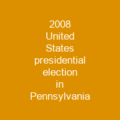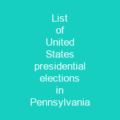Pennsylvania has swung from being a Republican-leaning state during much of the 20th century to being a notable battleground state in presidential elections. In 2008, Barack Obama won the state by a margin of over 10 percent, the largest victory seen in a presidential election in Pennsylvania since Richard Nixon’s victory in 1972. Donald Trump became the first Republican Presidential candidate to win Pennsylvania since George H. W. Bush in 1988. The true swing areas of the state are the suburbs of the large cities, notably Philadelphia, which change year-to-year.
About Politics of Pennsylvania in brief

The new map would take place in the May primaries. With the new congressional map in place, Democrats had a net gain of three congressional seats, giving the Democratic Party half of Pennsylvania’s congressional seats. Also in the 2018 midterm elections, Governor Tom Wolf won reelection by amargin of 17 percent, Bob Casey Jr. was reelected to a third term in the U.S. Senate, John Fetterman unseated incumbent lieutenant governor Mike Stack, and the Republican Party maintained control of the Pennsylvania House of Representatives.
You want to know more about Politics of Pennsylvania?
This page is based on the article Politics of Pennsylvania published in Wikipedia (as of Dec. 06, 2020) and was automatically summarized using artificial intelligence.







